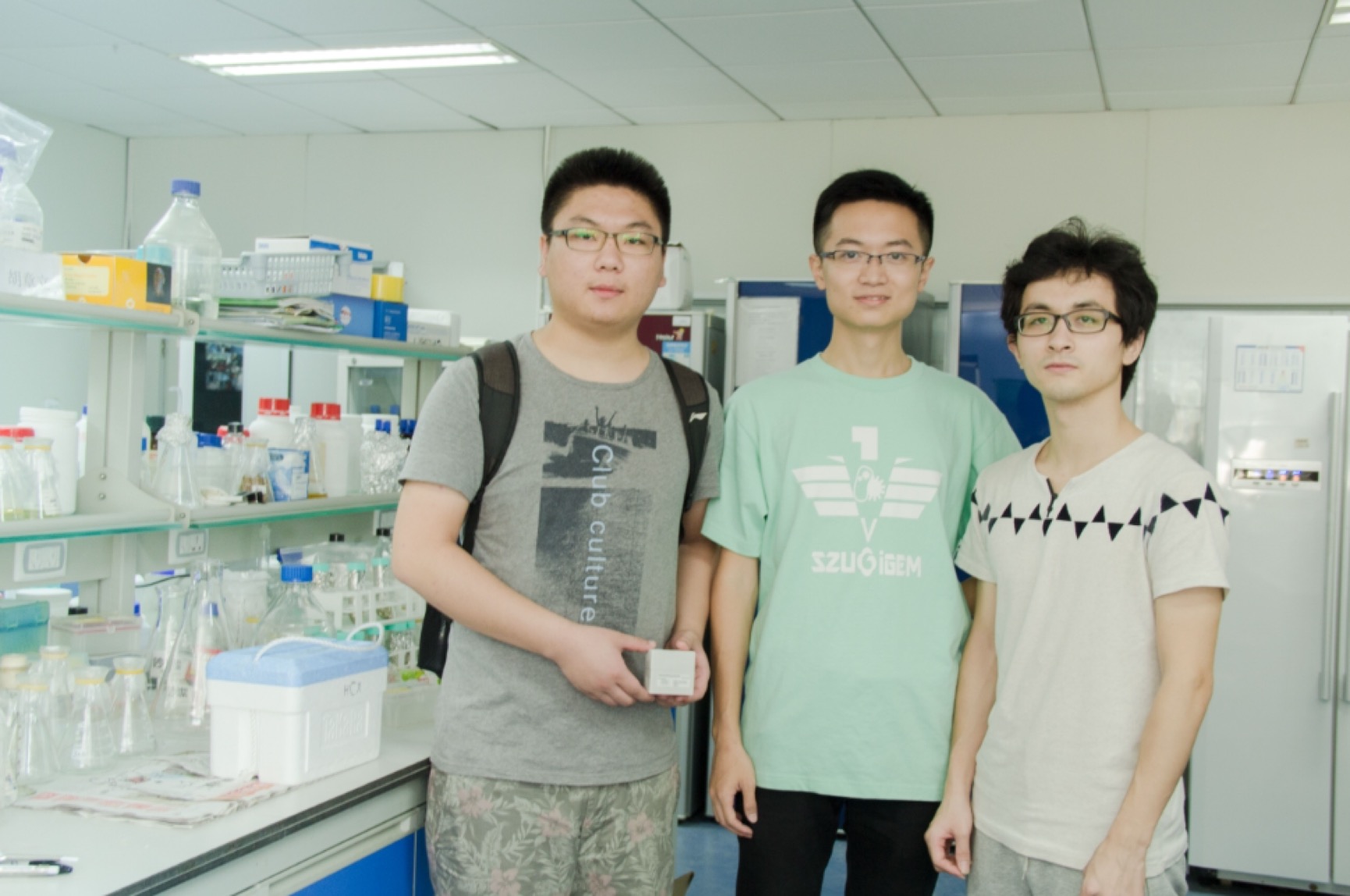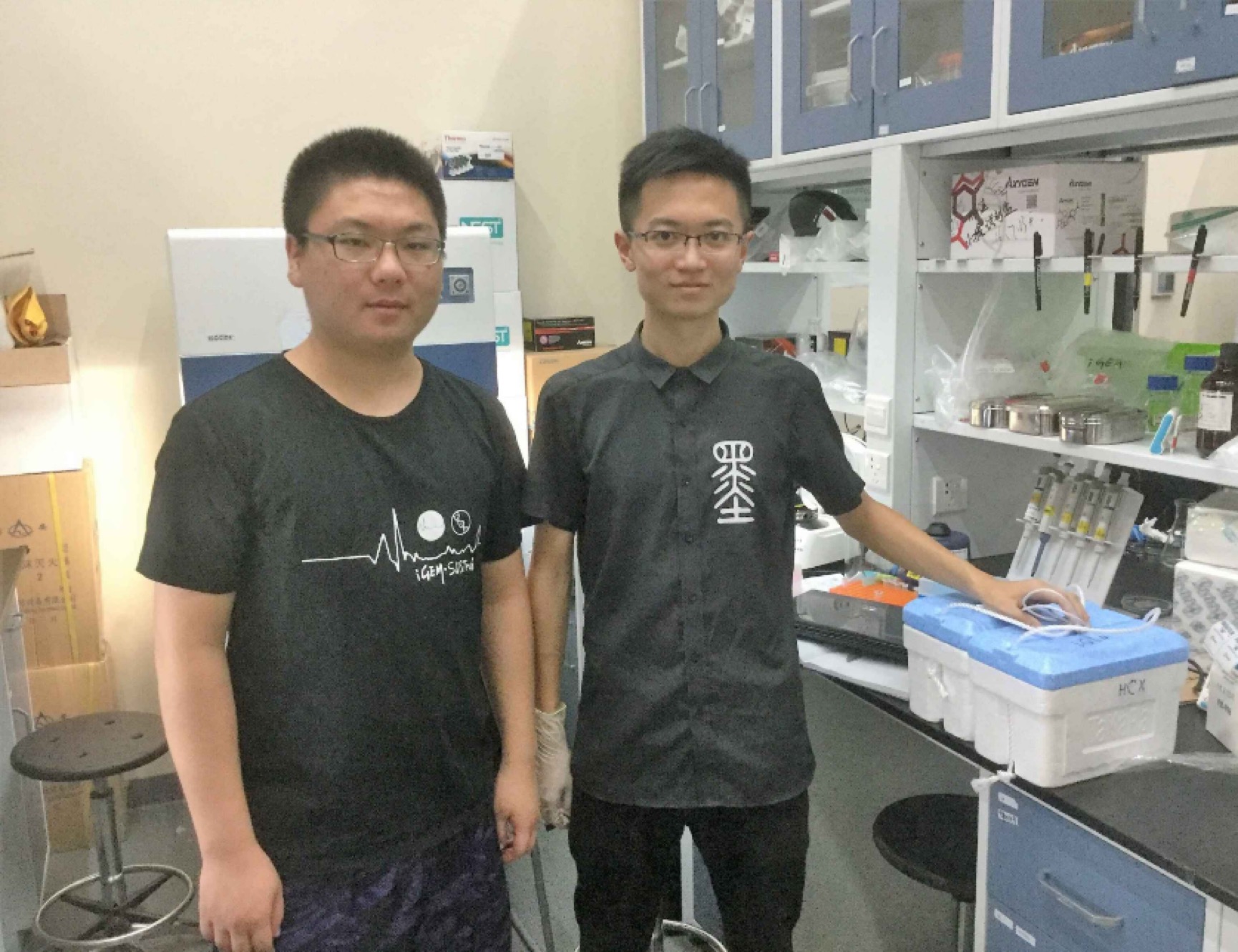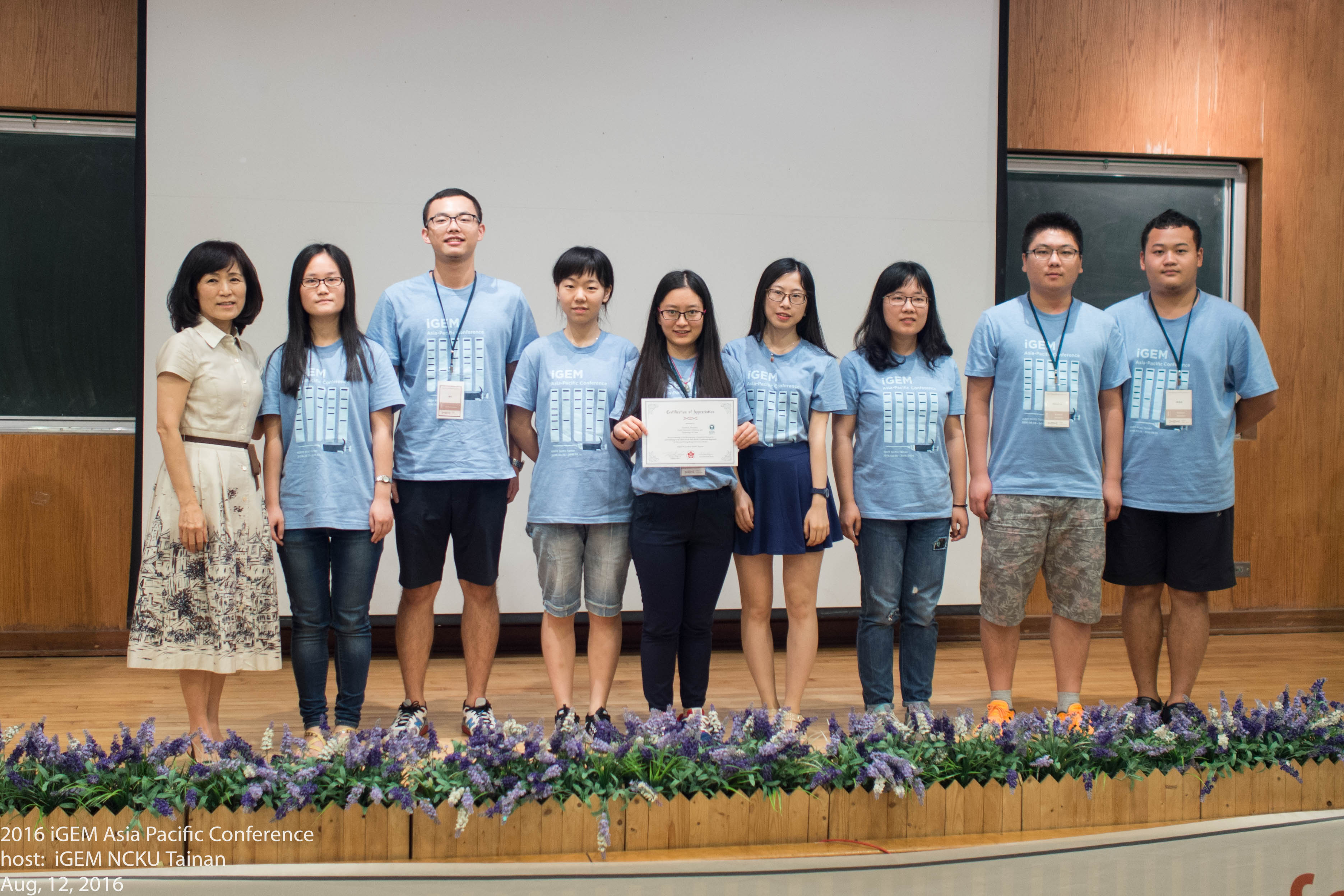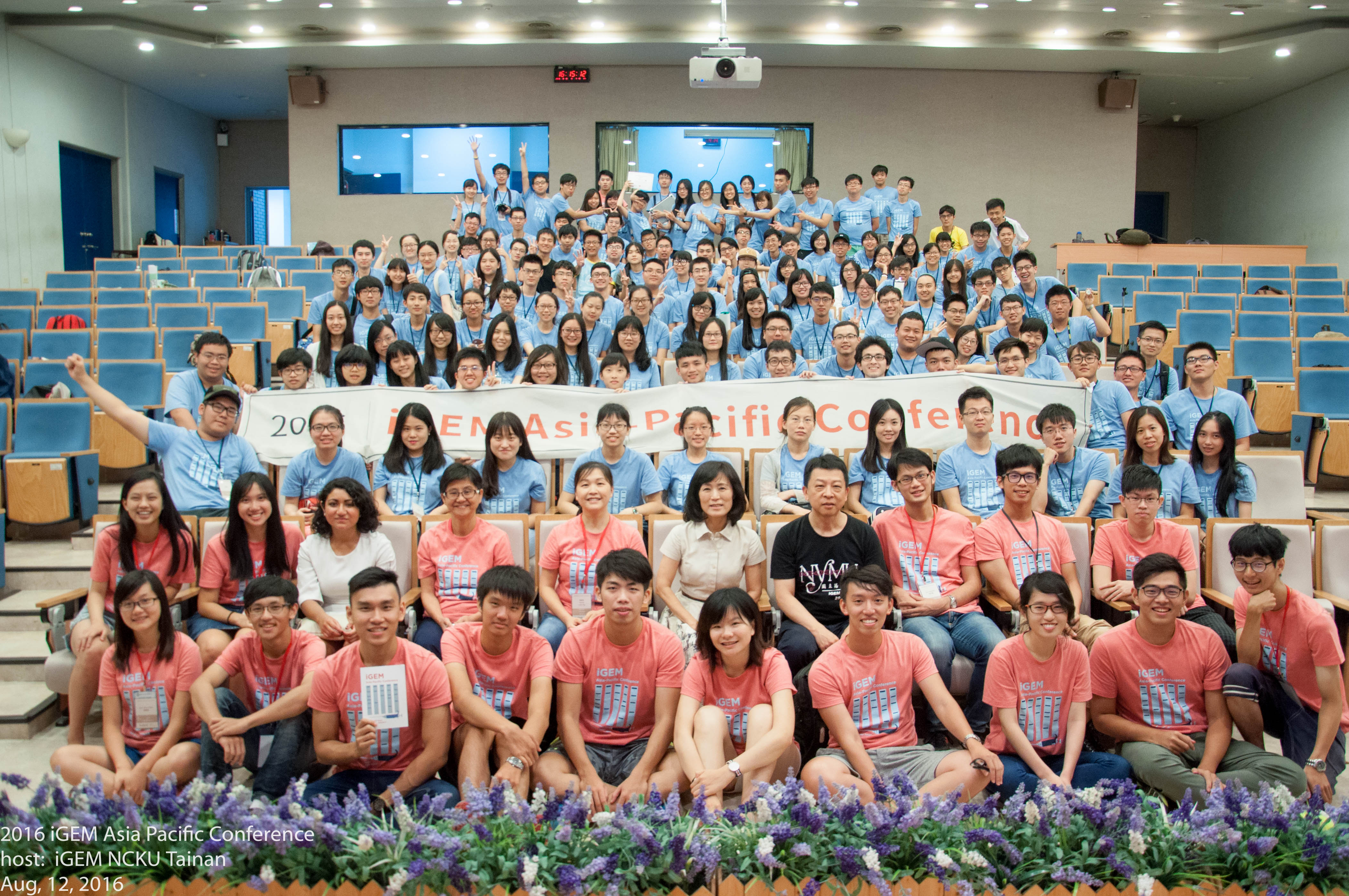Cockroach627 (Talk | contribs) |
|||
| (8 intermediate revisions by 4 users not shown) | |||
| Line 8: | Line 8: | ||
= With SZU-China = | = With SZU-China = | ||
| − | |||
| − | + | {{SUSTech_Image_Center_10 | filename=SUSTech_Shenzhen-4D254EAC-3BD8-4C4C-93FC-2043D5BF39DF.png | caption= | width=1000px }} | |
| − | + | There is a long tradition of helping each other between SZU-China iGEM team and us. Participating the iGEM competition is a challenging experience for college students like us, such as multitasking with course studies, other research works in the laboratory, handling administrative works, preparing for unsuspected events etc. It is quite comforting to have a reliable ally battling by your side through the toughest days. | |
| − | In September, when we were all busy with | + | There was quality issues with our Interlab study kit. Our sister university, the Shenzhen University solved our problem with lending us their Interlab study kit. |
| + | In September, when we were all busy with our parts construction work, they found that their pSB1C3 backbone provided by the iGEM kit was not working. As a result, their target gene could not be expressed successfully. After exhausted all the possibilities, including changing their antibiotics, LB agar plate, and all kinds of genes inserted, they came to us for help. | ||
| − | We provided them with the original backbone and one of our chromoprotein | + | We provided them with the original backbone and pSB1C3 with one of our chromoprotein BioBrick, which had been constructed with red pigment coding sequence eforRed. It is our favorite design in our BioBricks submissions because it could express strong crimson color. The loss of crimson color in colonies after subcloning indicated successful gene insertion. We provided these to our colleagues, which played a great role in their following experiments. |
| − | + | {{SUSTech_Image_Center_10 | filename=SUSTech_Shenzhen-7969A42C-A7BB-45A1-A89F-260C178B39E8.png | caption= | width=1000px}} | |
= With TCU_Taiwan = | = With TCU_Taiwan = | ||
| − | This year TCU_Taiwan | + | This year TCU_Taiwan came up with a great idea to use chromoprotein as a reporter to detecting diabetes. As a diagnostic tool, the bacterial indicators were expected to synthesize pigment as fast as possible when detecting glucose level in blood samples or urine samples. |
| − | + | Our team was also building our chromoprotein BioBricks. We shared our experiences with them them on the long expression time of chromoprotein. We also provided them with alternative suggestions , such as R-GECO which could respond instantaneously. We really hoped our advice could help them to improve their design and results. | |
= Special Thanks = | = Special Thanks = | ||
| − | We have to mention a special group that help us a lot. That is the whole family of iGEM-China. Chinese students now | + | We have to mention a special group that help us a lot. That is the whole family of iGEM-China. Chinese students are now making up a significant fraction in iGEM competition. However, due to time zone, and the language differences , we faced many challenges throughout the process. So we established a social media group to help each other. Each and every one of us benefited from this group. It is the greatest cooperation that can ever come to our doors. |
| − | + | ||
| − | + | ||
| − | + | ||
| − | + | ||
| + | We also want to thank the team from NCKU. They organized a wonderful conference to give the teams in the Asia-pacific area a chance to discuss their projects together. We received the warmest welcome from the hospitable team members of NCKU and had a great time during the conferences. It was a valuable opportunity to practice our presentation, and, most importantly, make new friends. | ||
| + | {{SUSTech_Image_Center_10 | filename=SUSTech_Shenzhen-B3BA096CAE97F127AD57FB02DD82EAF7.jpg | caption= | width=800px}} | ||
| + | {{SUSTech_Image_Center_10 | filename=SUSTech_Shenzhen-37986F142B9DDF746ADE9123D437DEC5.jpg | caption= | width=800px}} | ||
{{:Team:SUSTech_Shenzhen/main-content-end}} | {{:Team:SUSTech_Shenzhen/main-content-end}} | ||
{{:Team:SUSTech_Shenzhen/wiki-footer}} | {{:Team:SUSTech_Shenzhen/wiki-footer}} | ||
{{:Team:SUSTech_Shenzhen/themeJs}} | {{:Team:SUSTech_Shenzhen/themeJs}} | ||
Latest revision as of 13:29, 19 October 2016

Collaborations
Team
With SZU-China
There is a long tradition of helping each other between SZU-China iGEM team and us. Participating the iGEM competition is a challenging experience for college students like us, such as multitasking with course studies, other research works in the laboratory, handling administrative works, preparing for unsuspected events etc. It is quite comforting to have a reliable ally battling by your side through the toughest days.
There was quality issues with our Interlab study kit. Our sister university, the Shenzhen University solved our problem with lending us their Interlab study kit. In September, when we were all busy with our parts construction work, they found that their pSB1C3 backbone provided by the iGEM kit was not working. As a result, their target gene could not be expressed successfully. After exhausted all the possibilities, including changing their antibiotics, LB agar plate, and all kinds of genes inserted, they came to us for help.
We provided them with the original backbone and pSB1C3 with one of our chromoprotein BioBrick, which had been constructed with red pigment coding sequence eforRed. It is our favorite design in our BioBricks submissions because it could express strong crimson color. The loss of crimson color in colonies after subcloning indicated successful gene insertion. We provided these to our colleagues, which played a great role in their following experiments.
With TCU_Taiwan
This year TCU_Taiwan came up with a great idea to use chromoprotein as a reporter to detecting diabetes. As a diagnostic tool, the bacterial indicators were expected to synthesize pigment as fast as possible when detecting glucose level in blood samples or urine samples.
Our team was also building our chromoprotein BioBricks. We shared our experiences with them them on the long expression time of chromoprotein. We also provided them with alternative suggestions , such as R-GECO which could respond instantaneously. We really hoped our advice could help them to improve their design and results.
Special Thanks
We have to mention a special group that help us a lot. That is the whole family of iGEM-China. Chinese students are now making up a significant fraction in iGEM competition. However, due to time zone, and the language differences , we faced many challenges throughout the process. So we established a social media group to help each other. Each and every one of us benefited from this group. It is the greatest cooperation that can ever come to our doors.
We also want to thank the team from NCKU. They organized a wonderful conference to give the teams in the Asia-pacific area a chance to discuss their projects together. We received the warmest welcome from the hospitable team members of NCKU and had a great time during the conferences. It was a valuable opportunity to practice our presentation, and, most importantly, make new friends.





